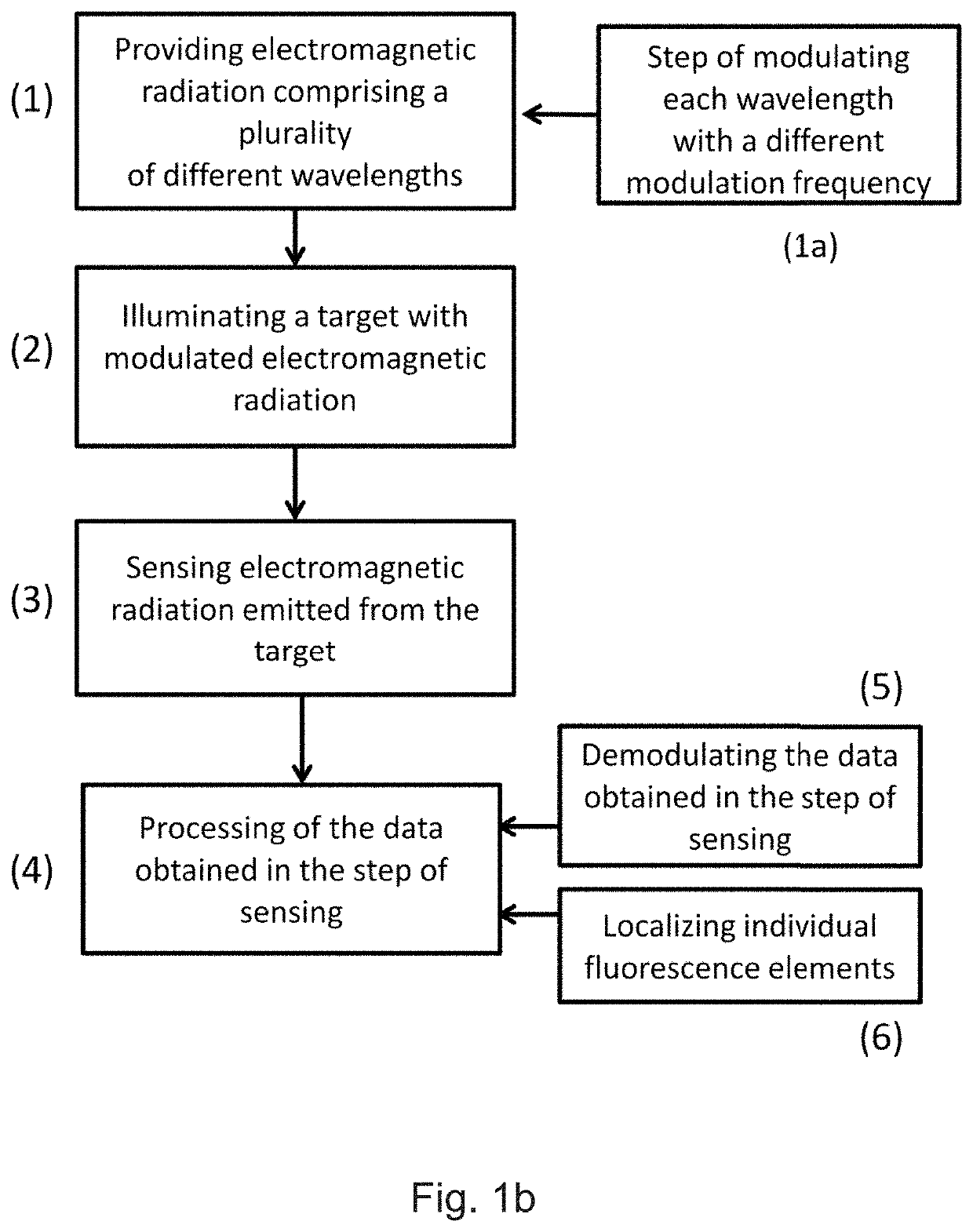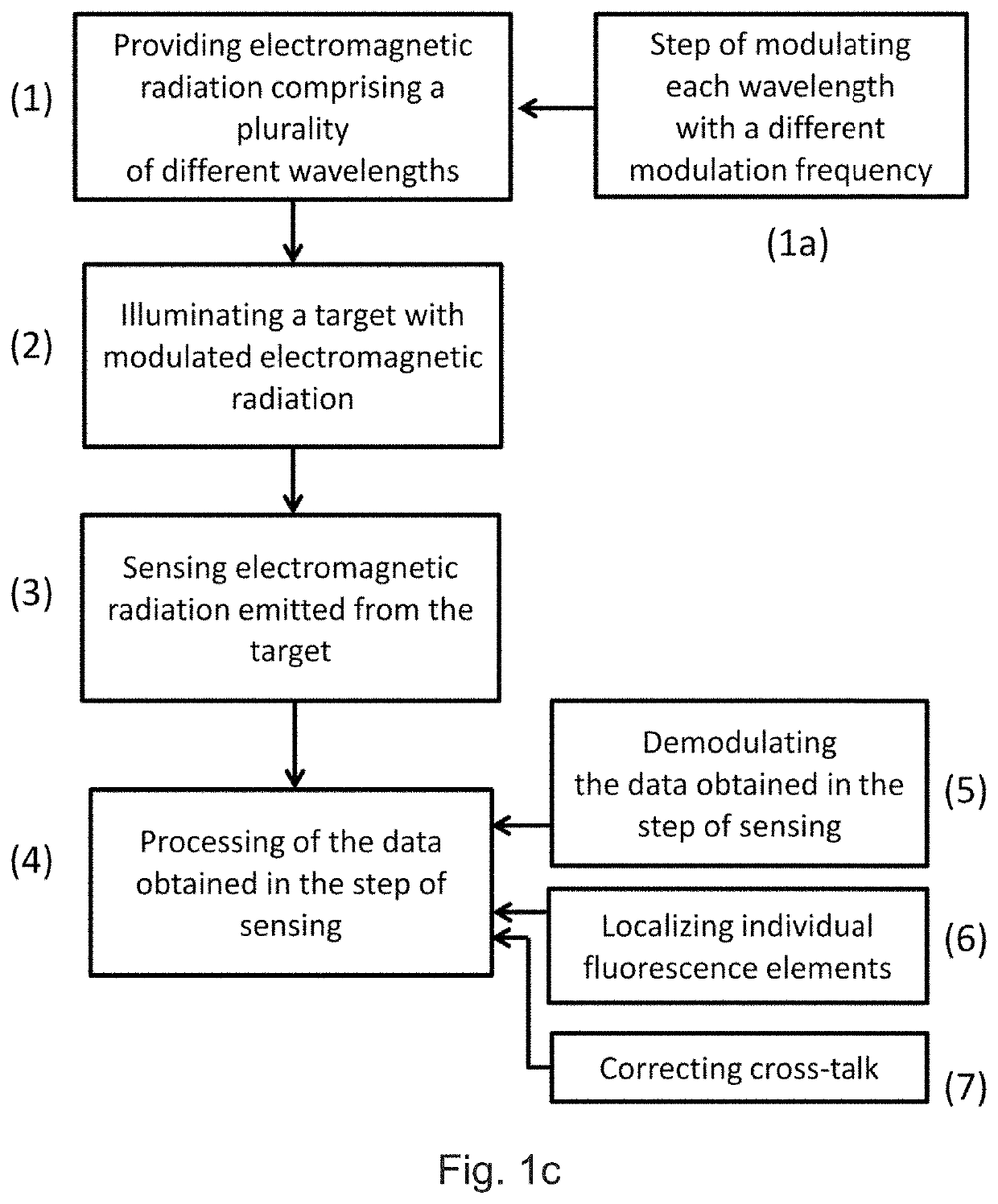Multi-color imaging
a multi-color, fluorescence technology, applied in the field of multi-color fluorescence methodology, can solve the problems of color cross-talk, inability to determine the coordinates of the image, implementation of super-resolution microscopy, etc., and achieve the effect of simple imaging device, simple optical configuration, and higher sensing throughpu
- Summary
- Abstract
- Description
- Claims
- Application Information
AI Technical Summary
Benefits of technology
Problems solved by technology
Method used
Image
Examples
Embodiment Construction
[0037]FIGS. 1a to 1c illustrate a schematic diagram of the steps of a method for simultaneous multi-color imaging according to a first embodiment of the disclosure and its variants.
[0038]The first embodiment of the disclosure is shown in FIG. 1a, for a method for simultaneous multi-color imaging using frequency-modulated illumination comprising a step 1 of providing electromagnetic radiation with a plurality of different wavelengths, comprising a step of modulating each wavelength with a different modulation frequency, a step 2 of illuminating a target with the modulated electromagnetic radiation, a step 3 of sensing electromagnetic radiation emitted from the target, and a step 4 of processing the data obtained in the step of sensing.
[0039]The step 1 of providing electromagnetic radiation with a plurality of different wavelengths comprises a step 1a of modulating each wavelength with a different frequency. The step 1a of modulating is performed to modulate independently the intensit...
PUM
| Property | Measurement | Unit |
|---|---|---|
| modulation frequencies | aaaaa | aaaaa |
| modulation frequencies | aaaaa | aaaaa |
| modulation frequencies | aaaaa | aaaaa |
Abstract
Description
Claims
Application Information
 Login to View More
Login to View More - R&D
- Intellectual Property
- Life Sciences
- Materials
- Tech Scout
- Unparalleled Data Quality
- Higher Quality Content
- 60% Fewer Hallucinations
Browse by: Latest US Patents, China's latest patents, Technical Efficacy Thesaurus, Application Domain, Technology Topic, Popular Technical Reports.
© 2025 PatSnap. All rights reserved.Legal|Privacy policy|Modern Slavery Act Transparency Statement|Sitemap|About US| Contact US: help@patsnap.com



